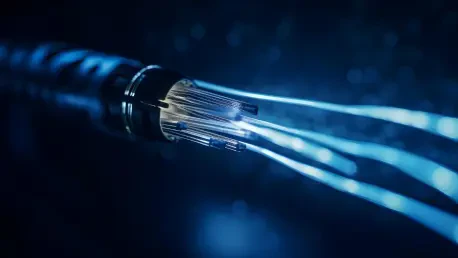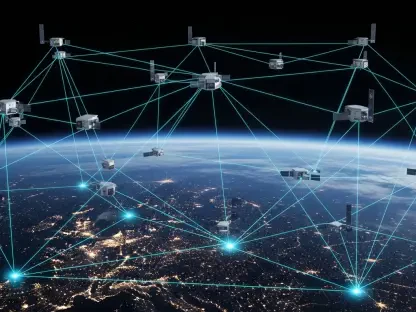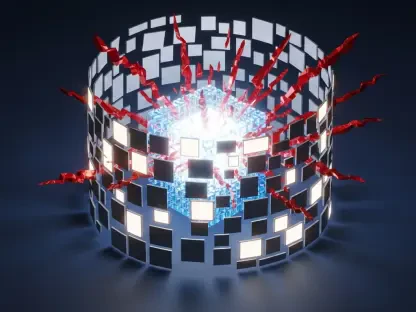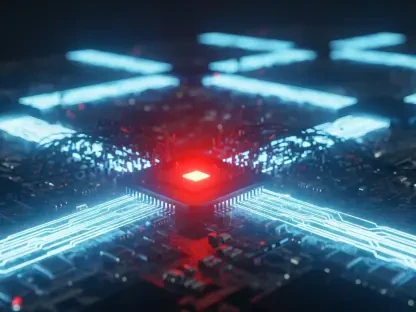In this interview, we have Vladislav Zaimov, an experienced telecommunications specialist renowned for his work in enterprise telecommunications and network risk management. Today, we delve into Nokia’s cutting-edge Aurelis Optical LAN solution, a notable advancement in enterprise network infrastructure. This solution promises significant benefits, including enhanced security, scalability, and cost efficiency. Additionally, it marks a central shift in the telecommunications industry towards sustainable, open network designs. Vladislav shares insights into these transformative changes, exploring the motivations behind development, key advantages, long-term benefits, and the evolving landscape of enterprise network solutions.
What motivated Nokia to develop the Aurelis Optical LAN solution specifically for enterprise networks?
The evolution toward fiber-based solutions like the Aurelis Optical LAN was driven by a clear demand for more secure, scalable connectivity within enterprises. As businesses increasingly rely on high-speed, reliable connections for applications like AI, video conferencing, and remote work, copper-based networks just weren’t cutting it. Nokia saw a pivotal opportunity here to introduce a fiber solution, addressing both the existing deficiencies in legacy systems and creating a future-proof infrastructure.
Can you elaborate on the main advantages of transitioning from copper-based networks to fiber solutions like the Aurelis Optical LAN?
Transitioning from copper to fiber offers numerous benefits. Primarily, there’s a significant jump in data transmission speed and capacity, which is essential for meeting modern demands like augmented reality and virtual reality applications. Fiber solutions also promise higher reliability, with less susceptibility to interference and degradation over time. From a cost perspective, although initial installation might be higher than copper, the long-term savings in maintenance and energy consumption are substantial, making it an attractive option for enterprises prioritizing cost management and sustainability.
The Aurelis Optical LAN claims to reduce cabling by up to 70%. How is this reduction achieved, and what impact does it have on network installation and maintenance?
Reduction in cabling is accomplished through the inherent characteristics of fiber optics, which can transmit data at much higher speeds and over longer distances than copper, using fewer physical strands. This decreases the complexity of network installation considerably. For maintenance, it means fewer components to manage, resulting in fewer points of failure and a more streamlined infrastructure. Ultimately, this simplifies network upgrades and expansions, allowing enterprises to adapt swiftly to new technological demands without massive rewiring projects.
What strategies are being used to achieve the reported 40% reduction in power consumption with the Aurelis Optical LAN?
The reduction in power consumption is largely attributed to the efficiency of fiber optics over copper, which requires less electrical power to maintain signal integrity over distances. Additionally, the streamlined network design adopted by Aurelis Optical LAN reduces the amount of active equipment needed, such as network switches and routers, which traditionally consume significant energy. Through intelligent engineering and strategic placement of networking components, Nokia has optimized energy use, aligning with broader industry goals toward sustainability.
Mr. Heyninck mentioned the 50+ year lifespan of the fiber foundation. What specific benefits does this longevity bring to enterprises?
A 50+ year lifespan translates to long-term cost savings and stability for enterprises. Knowing that their network infrastructure won’t require frequent overhauls or replacements means they can allocate resources elsewhere, potentially funding growth or innovation initiatives. It also offers peace of mind, as businesses can rely on a robust backbone that keeps pace with evolving technology demands without incurring constant upgrade costs, effectively reducing the total cost of ownership significantly over time.
How does Nokia ensure the compatibility of the Aurelis Optical LAN with existing IT ecosystems through open APIs?
Nokia has focused heavily on integration and openness. By incorporating open APIs, the Aurelis Optical LAN can seamlessly connect with existing IT systems and hardware, preventing the vendor lock-in that has historically restricted enterprise network configurations. This design philosophy matches industry goals to foster interoperability and flexibility in network setups. The result is a solution that can adapt to various software environments, ensuring that enterprises can continue using their favorite applications and services without disruption.
What steps has Nokia taken to guarantee that the Aurelis Optical LAN can handle high-demand applications like augmented reality and virtual reality?
The Aurelis Optical LAN is equipped with high bandwidth capabilities, currently supporting speeds from 1 Gb/s to 25 Gb/s, with plans to extend even further. This ensures that high-demand applications, which require seamless, real-time data delivery, are well supported. Moreover, Nokia has likely focused on minimizing latency and optimizing data flow within the LAN to promote consistent performance, regardless of demand spikes. This creates an adaptable foundation that can manage increasing digital workloads efficiently.
How does the Aurelis Optical LAN contribute to the trend of software-defined, interoperable networks, and why is this shift important for modern enterprises?
By emphasizing openness and integration, Aurelis Optical LAN inherently supports the shift toward software-defined networking. This approach decouples network hardware from its control software, allowing enterprises more granular control over their network configurations and performance. It’s crucial for modern enterprises to rapidly adapt to technological changes without being bogged down by rigid infrastructure constraints. Nokia’s solution offers this flexibility, paving the way for dynamic network management that responds promptly to evolving business needs.
Can you share more about the adoption of Aurelis Optical LAN in over 700 locations worldwide? What factors contribute to its growing success?
The widespread adoption rests largely on the solution’s reliability, performance capability, and sustainability. In diverse settings like hotels, hospitals, and universities, Aurelis Optical LAN has demonstrated its ability to offer consistent high-speed connectivity while cutting down power and cabling requirements. Such practical advantages appeal to enterprises focused on efficiency and long-term planning. Furthermore, the positive feedback received from early adopters, who witness firsthand the benefits, encourages broader implementation across varying sectors.
What feedback have you received from early adopters like FairNetz GmbH in Germany regarding the performance and sustainability of the Aurelis Optical LAN?
FairNetz GmbH is a prime example of how the Aurelis Optical LAN has resonated with its users. They’ve highlighted the reliable, high-performance connectivity that meets their immediate and future demands, alongside the tangible benefits in reducing power and cabling needs. This feedback underscores the system’s capacity for sustainability while maintaining peak performance. Such testimonials from early adopters build credibility and entice other enterprises to consider this solution for their networks.
What future developments can we expect from Nokia regarding the Aurelis Optical LAN, particularly in terms of increasing speed capabilities to 50 Gb/s and 100 Gb/s?
Looking forward, we can anticipate Nokia’s continuous investment in advancing the Aurelis Optical LAN’s speed capabilities. Achieving speeds like 50 Gb/s and 100 Gb/s would position it at the forefront of enterprise network technology, catering to the ever-increasing bandwidth demands spurred by burgeoning developments in digital applications. This effort would not only future-proof networks but also set a standard for high-performance enterprise connectivity across various sectors globally.
How does the Aurelis Optical LAN align with Nokia’s overall vision for sustainable and open telecommunication infrastructures?
The Aurelis Optical LAN is a manifestation of Nokia’s commitment to promoting sustainability and openness. By reducing energy consumption and planning for long-lasting infrastructure, Nokia reinforces its dedication to sustainable development. Additionally, the open design ensures that businesses aren’t locked into specific vendor ecosystems, promoting interoperability and flexibility, key tenets of a modern telecommunications infrastructure aiming to support diverse enterprise needs while minimizing environmental impact.
Are there specific industries or types of enterprises that would benefit more from implementing the Aurelis Optical LAN compared to others?
Industries with significant data and connectivity demands like healthcare, education, and hospitality stand to benefit greatly from implementing the Aurelis Optical LAN. These sectors frequently deal with extensive data throughput requirements and benefit from streamlined, efficient network infrastructure. Additionally, any enterprise keen on sustainability and long-term cost reductions would find great value in this solution’s promise of longevity and reduced energy consumption.
With the growing shift towards fiber and sustainability, how does Nokia plan to address potential challenges in transitioning existing networks to these new solutions?
Transitioning existing networks to fiber solutions can be challenging, particularly in terms of installation and initial costs. Nokia plans to address these by ensuring their solutions are as adaptable as possible, offering training and support for installation teams to minimize disruptions. Additionally, efforts to streamline the switch with a focus on quick returns in efficiency and cost savings aim to offset initial resistance, demonstrating the value proposition clearly to encourage more enterprises to make the leap.
Does the Aurelis Optical LAN incorporate any specific security features that address common vulnerabilities in enterprise networks?
Absolutely, as security remains paramount for enterprises. The Aurelis Optical LAN includes advanced security protocols to protect data integrity and privacy. Its fiber-based architecture is inherently more secure than copper, offering reduced risk of eavesdropping and interference. Combined with Nokia’s robust encryption and authentication measures, enterprises can trust the system to safeguard sensitive information against prevalent network vulnerabilities.
What is your forecast for the future of enterprise telecommunications with solutions like the Aurelis Optical LAN?
The future of enterprise telecommunications promises exciting shifts with fiber solutions like Aurelis Optical LAN paving the way. We’ll see growing adoption as more industries recognize the benefits of speed, reliability, and sustainability that come with fiber networks. It’s likely that these solutions will become the standard, pushing aside older technologies as enterprises seek to robustly support digital innovations and environmentally responsible practices. As demands for connectivity expand, solutions like Aurelis Optical LAN will help shape a future-ready, dynamic, and sustainable telecommunications landscape.









